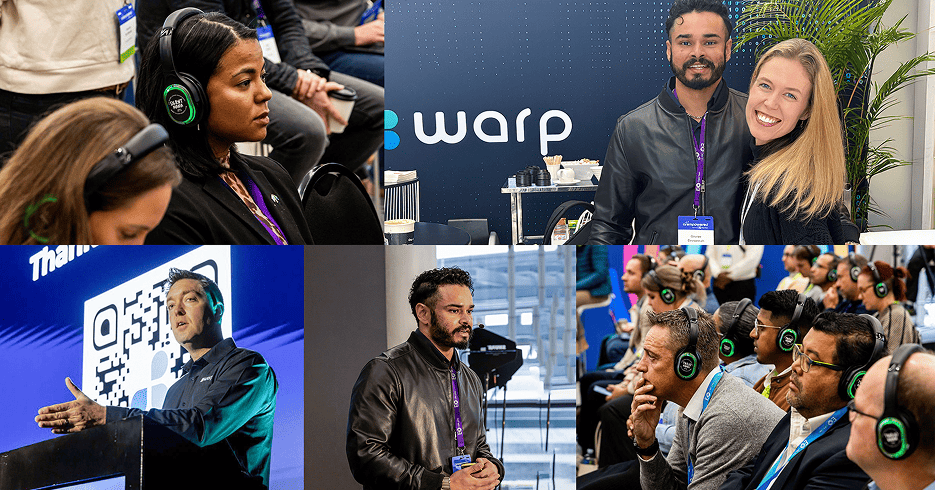Did you know that prompt engineering is only one piece of a bigger puzzle? Crafting clever prompts improves responses, but complex AI use cases need broader awareness. Context engineering builds complete systems that supply AI models with everything they need for effective responses. Prompt engineering focuses on input wording. Context engineering manages all information an AI model sees before generating responses. Most successful AI applications use both approaches together.
Consider this scenario:
You’re a manager delegating work to a team member. In example A, you provide clear instructions about what you need, but your team member lacks vision on how you typically approach these tasks or what other teams are working on. When you return, they’ve done good work, but it’s not what you expected and may conflict with another team’s efforts.
In example B, alongside clear instructions, you provide comprehensive background context, explain the bigger picture, including what other teams are doing, and conduct a workshop to break down the project into manageable tasks. When you return, the output is far more aligned with your expectations.
This management scenario perfectly illustrates the difference between prompt engineering and context engineering in AI.
The wisdom of “measure twice, cut once” applies perfectly here. Prompt engineering focuses on input wording, while context engineering manages all information an AI model sees before generating responses. This distinction becomes even more critical when considering AI’s current limitations. Research shows AI systems are only effective at working on a single problem for a limited time. The shorter the task, the higher the likelihood of success – after just 50 minutes, we’re looking at only a 50% success rate on most tasks.
Context Engineering Changes Everything
Context engineering shifts how you build AI systems. Prompt engineering crafts individual instructions. Context engineering designs frameworks that deliver relevant information, tools, and data at the right moment.
Gaurav, our head of AI, emphasises this shift: “CEOs report AI coding ≈ Decent engineering impact but massive gains for product/design and non-tech teams.”
This insight underscores how context engineering’s impact extends far beyond just coding improvements.
Your AI’s working memory matters
Context windows determine how much information AI models process simultaneously. Measured in tokens (roughly 1.5 tokens per word), these windows limit the text an AI “remembers” during conversations. Modern models now handle up to two million tokens—over 3,000 pages of text.
Larger context windows deliver:
- Complete document processing without memory gaps
- Higher accuracy with fewer hallucinations
- Coherent responses across long interactions
Expanded context creates new challenges: higher computational costs, slower processing, and potential security vulnerabilities.
Types of context that matter
Context engineering combines multiple information sources into comprehensive AI environments:
- System instructions: Core rules and behaviour guidelines
- Conversation history: Short-term memory of ongoing interactions
- Long-term memory: Stored information from past interactions
- Retrieved knowledge: Information from documents, databases, or external sources
- Tool definitions: Available functions the AI can access
- Structured outputs: Formats and schemas for responses
Context engineering builds dynamic “information packages” that adapt based on tasks, user history, and current situations.
Context makes prompts work better
Context engineering solves prompt engineering’s core limitation. Single prompts hit performance ceilings quickly. Context engineering creates systems that manage information surrounding those prompts.
This explains why identical prompts produce different results across users or time periods. Context engineering makes AI interactions feel natural—systems remember conversations, access live data, and understand preferences simultaneously.
Generic AI models become specialised business tools. They understand your terminology, processes, and requirements. Context engineering provides the foundation that makes prompt engineering effective.
Prompts vs. Context: The Real Difference
Most AI practitioners start with prompt engineering—crafting effective instructions to guide language models. This approach emerged early as developers discovered how specific phrasing impacts results.
What prompt engineering actually covers
Prompt engineering designs and optimises prompts that guide AI models toward desired responses. The process includes several key techniques:
- Zero-shot and few-shot learning with examples
- Role assignment (‘You are a customer service expert…’)
- Chain-of-thought prompting for complex reasoning
- Iterative refinement of prompt wording
Prompt engineering focuses on single-turn instructions. It optimises immediate output quality within the constraints of information contained in the prompt itself. This works well for simple, isolated tasks like content generation, basic Q&A, and classification problems.
Where prompt engineering hits the wall
Your business deploys AI in production environments. Several limitations become apparent quickly. Without robust context engineering, AI systems fail:
- Memory Gaps: Models forget previous conversations and user preferences
- Information Fragmentation: Critical data stays scattered across multiple systems
- Lack of Personalisation: Interactions feel generic without user context access
- Workflow Complexity: Multi-step processes need coordination beyond simple prompts
Context engineering builds the entire system
Context engineering represents a fundamental shift. You move from optimising individual instructions to designing comprehensive knowledge environments. The difference is clear:
- Prompt Engineering: Writing better questions
- Context Engineering: Building the entire system
Context Engineering Delivers Real Results
Context engineering solves practical business problems. These implementations deliver measurable impacts across industries.
Gaurav concludes by highlighting the efficiency gains: “PMs demo to customers 10× faster, close more business upfront, and reduce development cycles by focusing on validated features that customers have already seen.”
This prototype-first approach, enabled by context engineering, dramatically accelerates the development process.
Ready to explore how AI can work for you? We’re here to boost your productivity and unlock your business potential with user-friendly AI tools that easily integrate into your operations. Contact us here.
FAQs
What exactly is Ionic, and how does it differ from native development?
Ionic is an open-source SDK that enables cross-platform mobile app development using web technologies (HTML, CSS, JavaScript). Unlike native development, which requires platform-specific languages (Swift/Objective-C for iOS, Java/Kotlin for Android), Ionic allows developers to write code once and deploy across multiple platforms, significantly reducing development time and costs.
What programming knowledge do I need to use Ionic?
You’ll need proficiency in web technologies: HTML, CSS, and JavaScript. Knowledge of TypeScript and familiarity with a JavaScript framework (particularly Angular, React, or Vue) is highly beneficial as Ionic integrates well with these frameworks.
How does Ionic perform compared to native applications?
While Ionic has made significant performance improvements, there can still be a performance gap compared to fully native apps, particularly for graphics-intensive applications. However, for most business applications and content-driven apps, the performance difference is negligible, especially when proper optimisation techniques are employed.
What types of applications are best suited for Ionic?
Ionic is particularly well-suited for business applications, content-driven apps, e-commerce platforms, and enterprise solutions that don’t require intensive graphics processing. It’s ideal when you need to deploy across multiple platforms with consistent UI and functionality.
How does Ionic impact development time?
Ionic can significantly reduce development time through its cross-platform capabilities, extensive library of pre-built components, and rapid prototyping features. This allows for faster time-to-market, which can be a critical competitive advantage in many industries.



